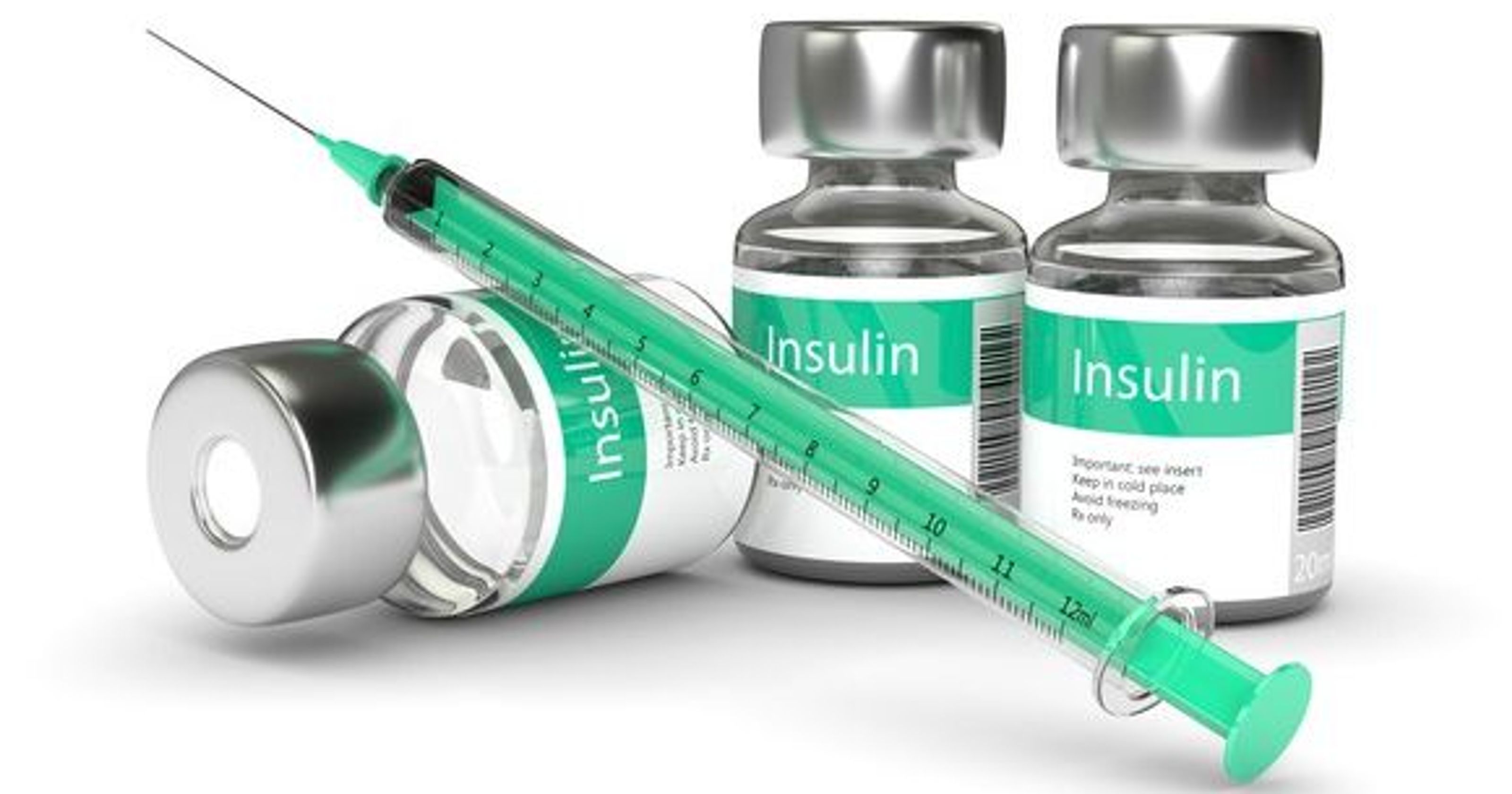
The evolution of the prescription drug Insulin is living proof of how American healthcare can both save life and end life. Like most prescription drugs the American healthcare industry played a major role in its invention. Unlike most prescription drugs it defies the laws of gravity, the longer Insulin stays around the cost goes up, it doesn’t come down. This life saving prescription drug is a prime example of how good American healthcare is at preserving life, and how greed makes American healthcare bad at providing healthcare to all Americans.
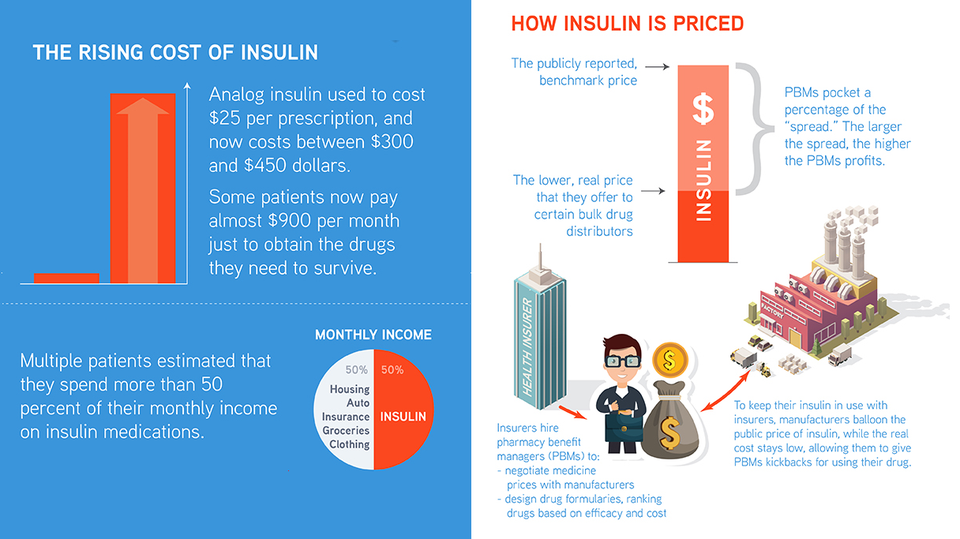
Insulin first became available for sale to the general public in 1922. It is a prescription drug used to treat Diabetes, a disease that is a serious, usually life-long condition and the sixth leading cause of death in the United States. Diabetes is a disorder of one’s metabolism, which regulates the way the human body digest food and converts it into energy. There are three forms of diabetes. Type 1 diabetes is an autoimmune disease that accounts for five- to 10-percent of all diagnosed cases of diabetes. Type 2 diabetes accounts for 90- to 95-percent of all diagnosed cases. The third type of diabetes occurs in pregnancy and is referred to as gestational diabetes. Left untreated, gestational diabetes can cause health issues for pregnant women and their babies.

Because of the high cost of prescription drugs the only way a lot of Americans can afford them is if they are lucky enough to come across discount coupons
Diabetes is a disease condition where blood glucose or blood sugar levels are too high within the human body. Glucose comes from the foods you eat. Insulin is a hormone that helps the glucose get into your cells to give them energy. With type 1 diabetes, your body does not make insulin. With type 2 diabetes, the more common type, your body does not make or use insulin well. Without enough insulin, the glucose stays in your blood. This can cause a condition known as prediabetes when blood sugar is higher than normal but not high enough to be called diabetes. Having prediabetes means a higher risk of getting type 2 diabetes.
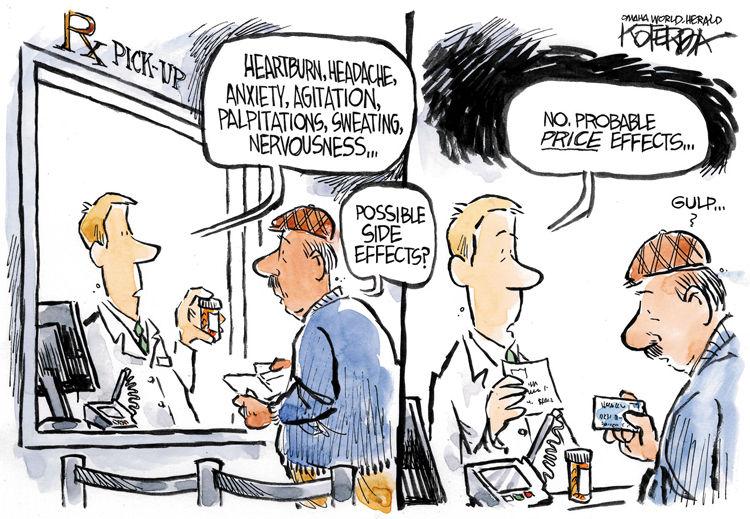
The greed pricing of prescription drugs alone can make one sick, causing undue stress over how to pay the artificially high prices
Over time, having too much glucose in your blood can cause serious problems. It can damage your eyes, kidneys, and nerves. Diabetes can also cause heart disease, stroke and even the need to remove a limb. In 2015 diabetes was listed on 79,535 death certificates as the cause of death, and on 252,806 death certificates as an underlying cause of death. Increasingly the number of diabetes deaths is not caused by the disease itself, but by a diabetes sufferer’s inability to afford the prescription drug insulin to treat the disease. A fact that illustrates the bad, greed side of American healthcare.
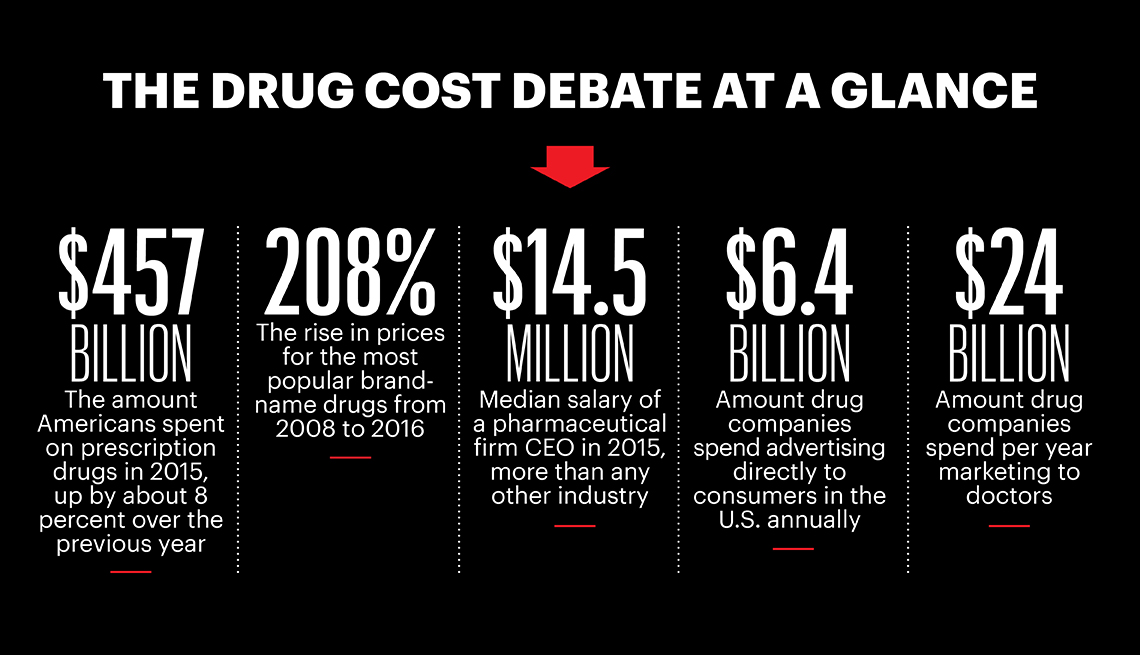
The biggest problem with American healthcare is cost, and the biggest problem with the cost is the cost of prescription drugs. The prescription drug insulin is a prime example of the ingenuity of American for-profit healthcare to treat a healthcare problem. It’s also a prime example of how American for-profit healthcare greed can literally kill those who need the prescription drugs to live but can’t afford them.
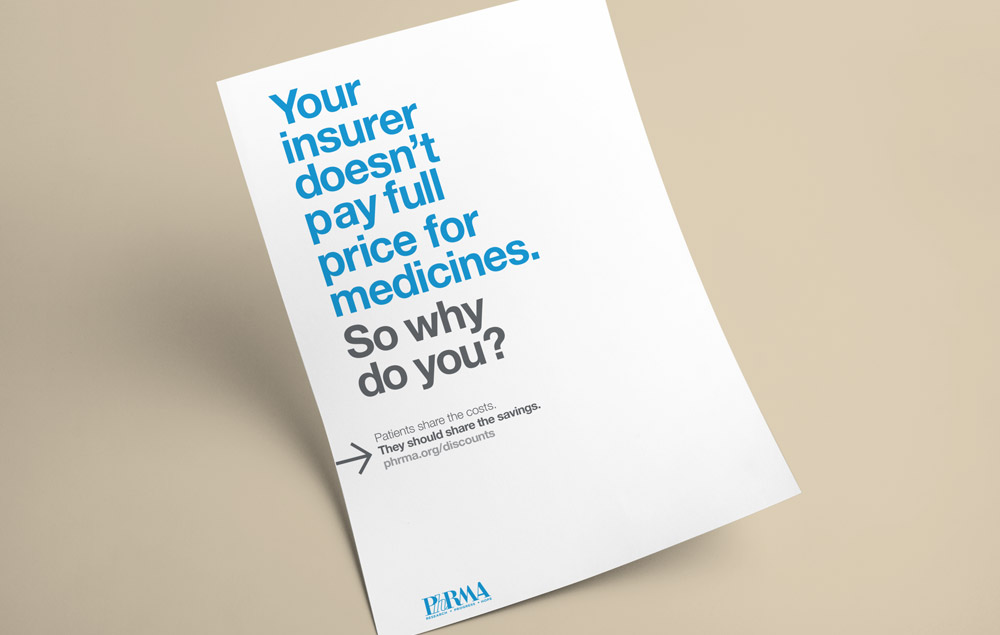
40% of a medicine’s list price is given as a rebate or discount to the government and middlemen, like insurers and pharmacy benefit managers (PBMs). Unfortunately insurers do not share these discounts with patients who pay a deductible or coinsurance
A real life person who unfortunately is the ultimate example of death by healthcare greed is Alec Raeshawn Smith. Alec started reviewing his options in February 2017, three months before his birthday on May 20 when at age 26 he would age off his mother’s insurance plan. His pharmacist told him his diabetes supplies, mostly insulin, would cost $1,300 a month without insurance. His $35,000 salary was too much to qualify for subsidies for Minnesota’s health insurance marketplace. The cheapest insurance he found had a $450.00 premium each month with an annual deductible of $7,600.00, meaning in addition to the $450.00 monthly premium Alec would have to spend $7,600.00 before the prescription drug co-pay benefit would kick in.

Alec decided going uninsured would be more manageable. He died less than one month after going off of his mother’s insurance. Alec was rationing his insulin, using less than he needed, to try to make it last until he could afford to buy more. He died alone in his apartment three days before payday. The insulin pen he used to give himself shots was empty.
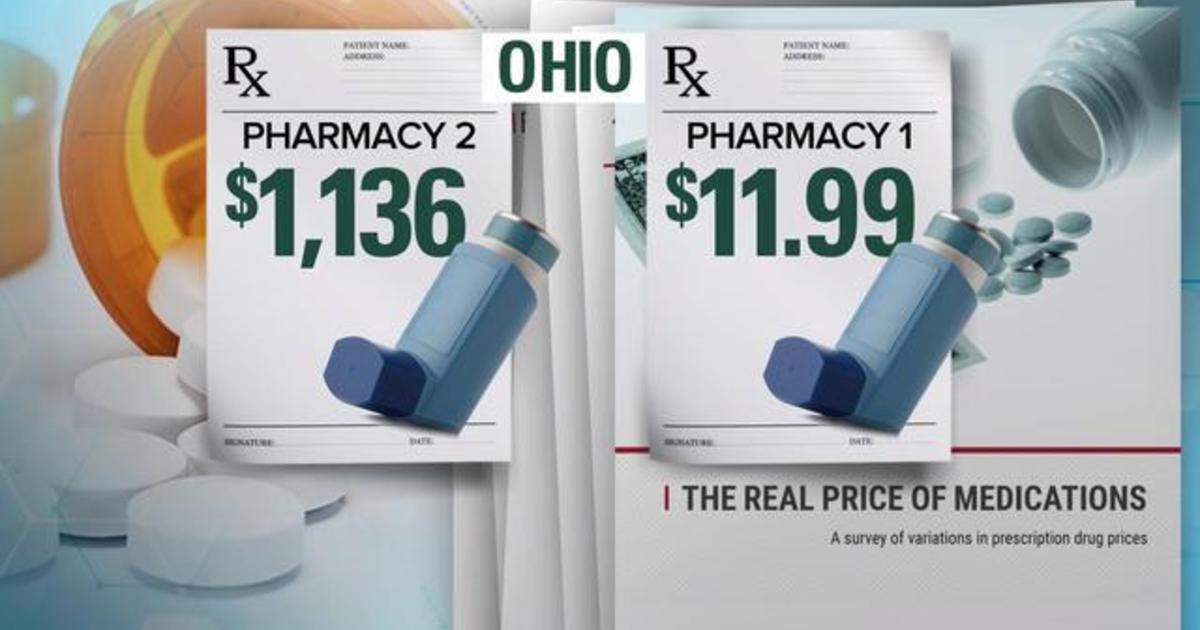
The price of the same prescription drug can vary by hundreds or even thousands of dollars, depending on where you buy it, according to a new report by the U.S. Public Interest Research Group which surveyed hundreds of pharmacies and found large price differences for identical medications.
A logical question is why is a prescription drug that has been available to the public since 1922 unaffordable for anyone 97 years later. The biggest reason the prescription drug insulin is unaffordable for many Americans is because of something familiar to for-profit economics, a monopoly. Currently Eli Lilly, Novo Nordisk, and Sanofi – dominate more than 90% of the world insulin market. Often only one of these companies supplies insulin in a particular country, which means they more or less hold a monopoly there and can set prices as they wish. In 2 countries, China and India, there are domestic insulin companies that drive down the price. This demonstrates how more companies selling insulin in America would bring prices down.
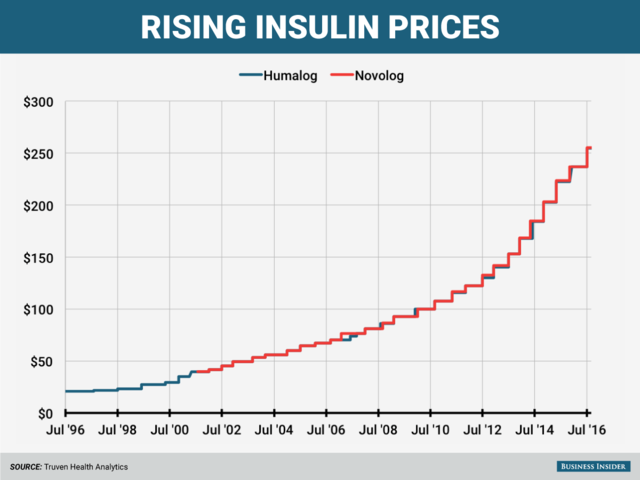
Eli Lilly’s Humalog cost $20.82 in 1996 and now goes for $255.40, an increase of 1,124% over 20 years. Novo Nordisks’s Novolog first hit the market in August 2001 at $39.75, and as of July 2016, a vial comes with a list price of $255.40 exactly the same as Humalog
The 3 pharmaceutical companies are accused of conspiring to fix prescription drug prices, a practice known as “shadow pricing.” Two lawsuits, one a class action suit filed by patients and the other brought by the state of Minnesota, allege that all 3 companies fraudulently set artificially high list prices for their prescription drugs while offering rebates to pharmacy benefit managers (PBMs). The rebates are offered in exchange for the PBMs adding the company’s prescription drugs to the healthcare plans the PBMs represent. The lawsuits contend that shadow pricing makes insulin less affordable for diabetes patients in high deductible healthcare plans, the uninsured, and senior citizens covered by the government Medicare healthcare program.
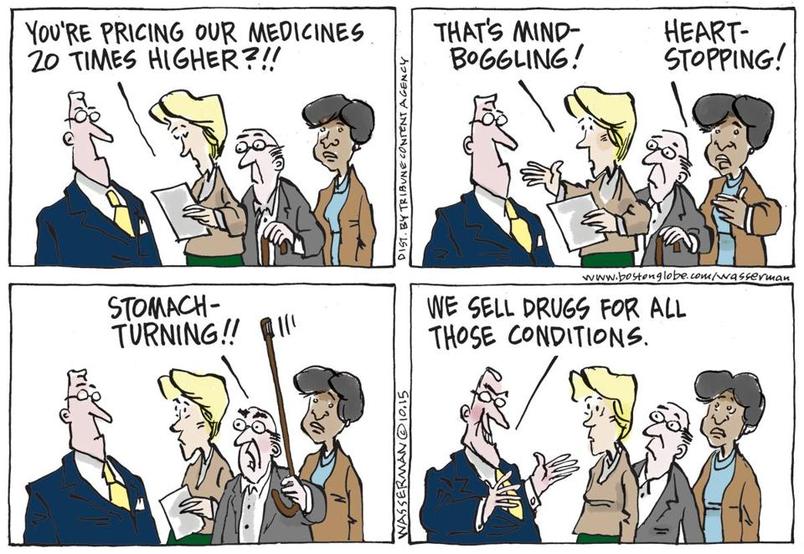
Another greed tactic of pharmaceutical companies is patent evergreening. Patent evergreening is when pharmaceutical companies take advantage of loopholes in the U.S. patent system by attaching new patents to the original 20 year patent. This ensures they can prevent competition and can keep prices high for decades. Sanofi, the maker of Lantus, is a prime example of this greed tactic. Sanofi has filed 74 patent applications on their popular diabetes medication alone, that means Sanofi has created the potential for a competition-free monopoly for 37 years. That’s almost twice as long as the already generous 20-year exclusivity period that exists to reward companies for bringing new drugs to market.
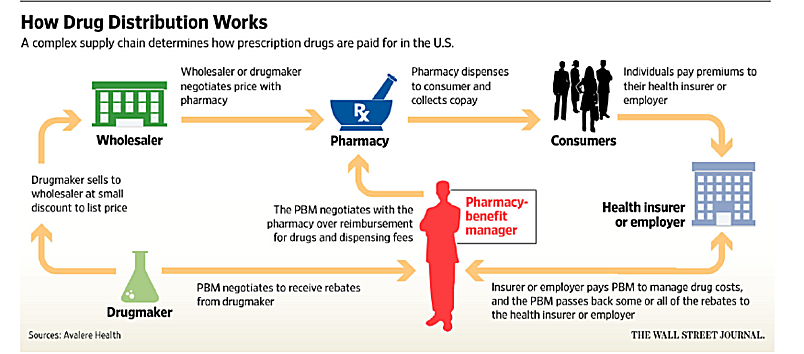
Finally, the most shameful greed tactic pharmaceutical companies engage in is pay-for-delay schemes & lawsuits. A pay for delay agreement is a patent dispute settlement in which a generic manufacturer acknowledges the original patent of a pharmaceutical company and agrees to refrain from marketing its product for a specific period of time. In return, the company receives a payment from the patent-holder. This means it is actually legal for one insulin producer to pay another one not to enter the market and produce insulin. A few years ago the company Merck announced plans to sell a biosimilar version of Sanofi’s Lantus. Sanofi sued, and eventually, Merck announced that it was no longer pursuing its biosimilar, presumably due to payments from Sanofi to stay away. If pay for delay schemes don’t work, the ‘big three’ can still sue other players, prolonging processes and pushing players out of the market because of legal fees and time delays. All of these are win-wins for companies and lose-lose for patients.
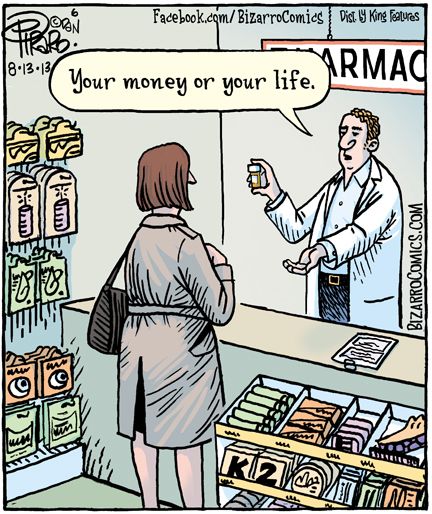
This is the position that the greed of pharmaceutical companies have forced many Americans into!!!
The prescription drug insulin is one of the most egregious examples of how greed in American healthcare denies treatment to those who can’t afford it, and literally kills people. All 3 of these shameful greed tactics can and should be prevented by law as part of any of the proposed Obamacare fixes. Democrats need to leave the impeachment of Donald Trump for any corruption to voters in the 2020 election, for now, they need to focus with laser beam intensity on eliminating the greed, corruption and profiteering taking place in American healthcare!!!

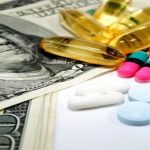

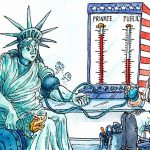
Leave a Reply